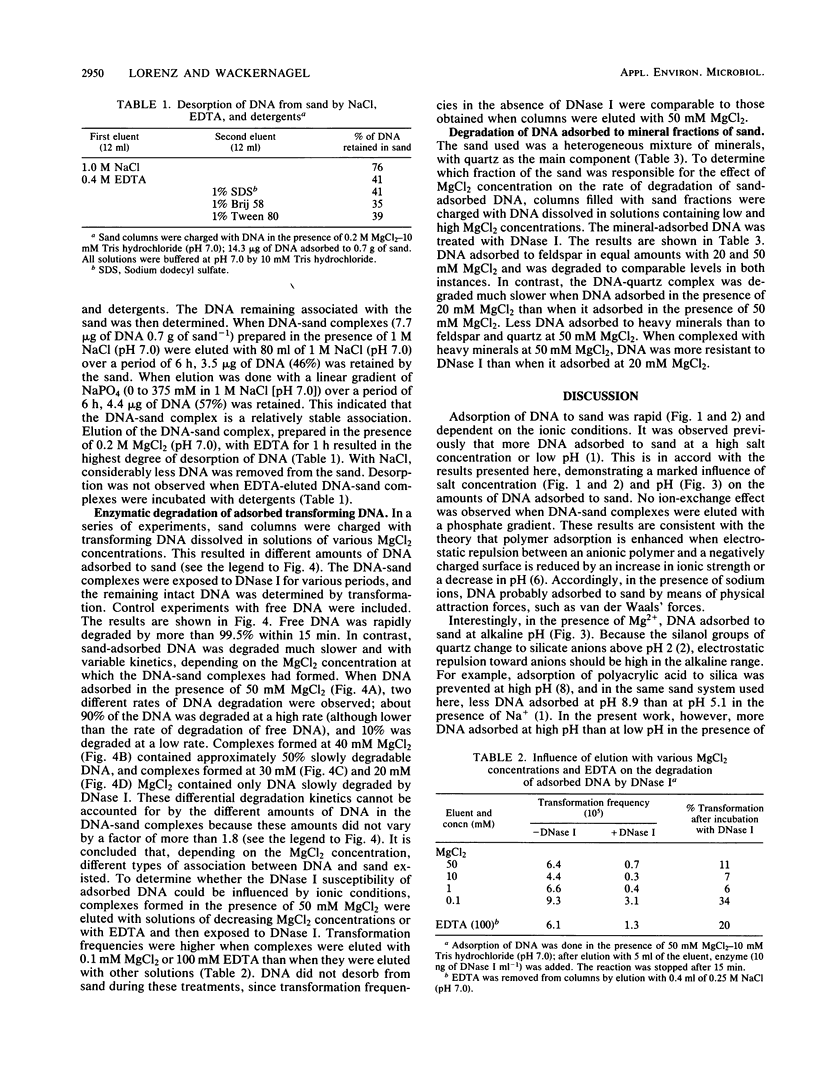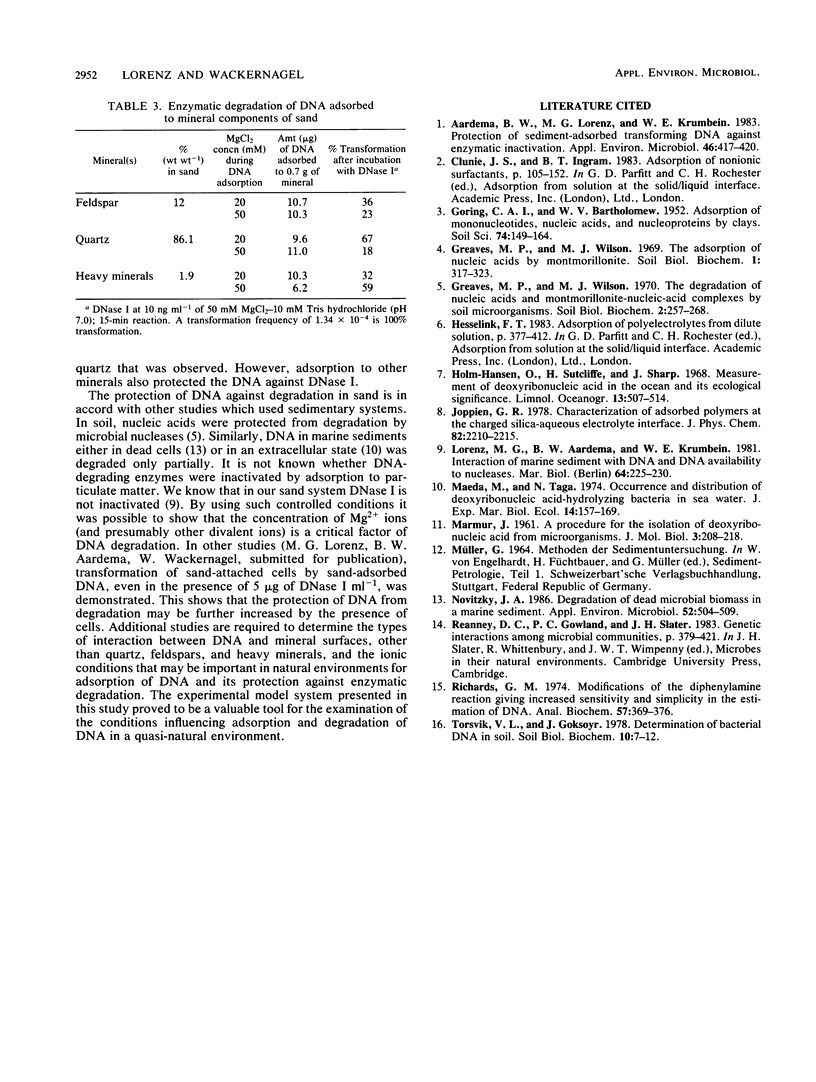Abstract
Adsorption and desorption of DNA and degradation of adsorbed DNA by DNase I were studied by using a flowthrough system of sand-filled glass columns. Maximum adsorption at 23 degrees C occurred within 2 h. The amounts of DNA which adsorbed to sand increased with the salt concentration (0.1 to 4 M NaCl and 1 mM to 0.2 M MgCl2), salt valency (Na+ less than Mg2+ and Ca2+), and pH (5 to 9). Maximum desorption of DNA from sand (43 to 59%) was achieved when columns were eluted with NaPO4 and NaCl for 6 h or with EDTA for 1 h. DNA did not desorb in the presence of detergents. It is concluded that adsorption proceeded by physical and chemical (Mg2+ bridging) interaction between the DNA and sand surfaces. Degradability by DNase I decreased upon adsorption of transforming DNA. When DNA adsorbed in the presence of 50 mM MgCl2, the degradation rate was higher than when it adsorbed in the presence of 20 mM MgCl2. The sensitivity to degradation of DNA adsorbed to sand at 50 mM MgCl2 decreased when the columns were eluted with 0.1 mM MgCl2 or 100 mM EDTA before application of DNase I. This indicates that at least two types of DNA-sand complexes with different accessibilities of adsorbed DNA to DNase I existed. The degradability of DNA adsorbed to minor mineral fractions (feldspar and heavy minerals) of the sand differed from that of quartz-adsorbed DNA.
Full text
PDF




Selected References
These references are in PubMed. This may not be the complete list of references from this article.
- Aardema B. W., Lorenz M. G., Krumbein W. E. Protection of sediment-adsorbed transforming DNA against enzymatic inactivation. Appl Environ Microbiol. 1983 Aug;46(2):417–420. doi: 10.1128/aem.46.2.417-420.1983. [DOI] [PMC free article] [PubMed] [Google Scholar]
- Novitsky J. A. Degradation of dead microbial biomass in a marine sediment. Appl Environ Microbiol. 1986 Sep;52(3):504–509. doi: 10.1128/aem.52.3.504-509.1986. [DOI] [PMC free article] [PubMed] [Google Scholar]
- Richards G. M. Modifications of the diphenylamine reaction giving increased sensitivity and simplicity in the estimation of DNA. Anal Biochem. 1974 Feb;57(2):369–376. doi: 10.1016/0003-2697(74)90091-8. [DOI] [PubMed] [Google Scholar]


